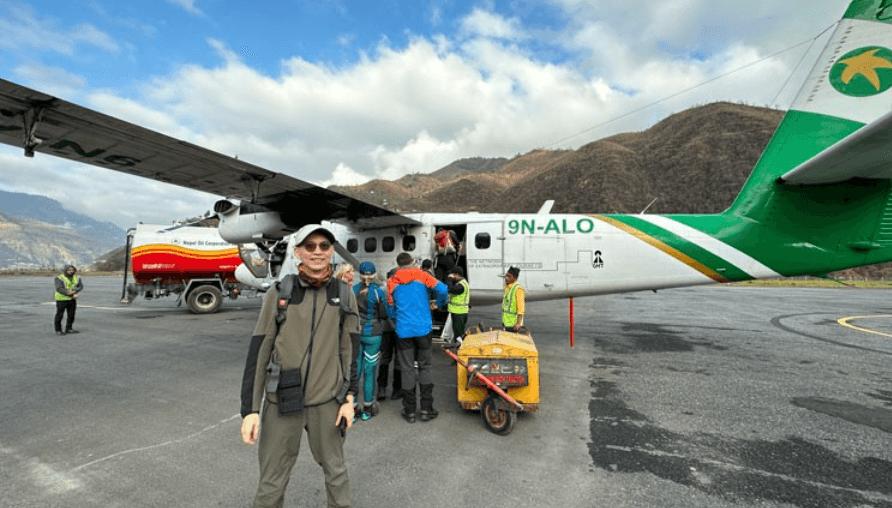
How To Handle Unexpected Flight Delays in Lukla Like a Pro
Outline Itinerary: One of the best treks in the world, Everest Base Camp is most commonly visited by thousands of people each year; it’s a long walk through the solace of the Himalayas. It is a hike that brings you the soul-stirring spectacle of the highest peaks in the world and an opportunity to explore the rich culture of the legendary Sherpa people who dwell and prosper among these sky-scraping view corridors. This complete guide prepares intensively you not only for the iconic Everest Base Camp Hike itself — from what your budget should be for the EBC Trek Cost; to precisely how long (and where) you need to absolutely trek during a ideal Everest Base Camp Trek Itinerary — but also addresses in full those essential insider tips on how best to nail one of the most unreliable logistical aspects of any trip: Getting stuck with flight delays at Lukla Airport. By planning, you ensure that every section of your Everest Base Camp Tour is a Huge success.
Make the Perfect Itinerary for Everest Base Camp Trek
Most of the trekkers usually do the 12-14-day Everest Base Camp (EBC) Trek, which is a well-designed plan and begins with a scenic flight to Lukla at Tenzing-Hillary Airport. The trip itinerary of Everest Base Camp is done by High Himalayan Trekking and Expedition. Some popular places to stop (or acclimatize) include Phakding, the ‘capital’ of Namche Bazaar (with a mandated rest day), Tengboche, Dingboche (which includes a second obligatory acclimatization hike), Lobuche, Gorak Shep, and finally infamous Everest Base Camp. Finally, all of those early mornings going u, characterized by the hike, culminate at Kala Patthar with your chance for the quintessential sunrise to see Everest, Lhotse, and Nuptse right across the way.
See also: AI Character Chat: Bringing Digital Conversations to Life
Best Time for EBC Trekking:
Deciding on the perfect time to complete your ascent of EBC definitely makes your trip a sweeter one. The most beautiful two months are Spring (March – May) and Autumn (September – November). These are days with good stable weather,r little clo,ud and brilliant visibility, so you get the perfect mountain shots that you dreamt of. Those forays outside these windows are more exposed to monsoon rains or penetrating cold, and a successful sojourn is less certain.
Fitness of Mind and Body for Mountain Everest Base Camp Trek
The sheer onus of graft it takes to get you there in bland colours and obvious fashion>Your EBC Trek is a field of training first, hike second. Physical practice should at least start 3-4 months in advance, with more focus on endurance. Even with that in mind, it’s always good to have some regular, consistent cardio work (in my opinion). Focus on strengthening the legs and middle to tackle the hard uphill trails of the Himalayas.
However, it’s the psychological issue of the Mt Everest Base Camp Trek, which is arguably even greater important. Attempt to maintain an upbeat and patient outlook. You want to be patient on the trek due to the fact that acclimatization is the whole thing. Know the signs of AMS (Acute Mountain Sickness), and be prepared to listen up while your manual offers you instructions on staying healthy. It’s mental resiliency that finally gets you through the high-altitude days and necessary logistical snafus.
Must-have things to carry and wear in Everest base camp – Layering techniques for high altitude.
It’s going g be a very varied climate along the EBC route, so this is how you need to dress. You should have good-quality, moisture-wicking base layers, an insulating fleece mid-layer, and a waterproof/breathable outer layer in your kit. A thick down padding jacket and a four-season sleeping bag (at least suitable for -10∘°C) are crucially needed on the cold nights above passing.
Ensure your waterproof hiking boots are well-worn in, or you’ll be chafed, and take socks to match too. Other necessities: U.V.-rated sunglasses, trekking poles (they are not scary enough that you will feel like having them on for the drive or anything), and a well-stocked personal first-aid kit with pain relievers, blister preventatives, and medicine your doctor has given you for altitude management (like Diamox). Front gear travels best when light, but with everything needed.
Trail Life: Teahouses, Foods, and Sherpa culture
Accommodation whilst on the EBC trek is in traditional teahouses – simple mountain lodges which are built of wood and stone, have running water (not drinkable), shared outside toilet facilities, and a cozy dining area. Rooms are typically functional with a pair of twin beds, shared bathrooms rule at altitude, and the communal dining room is a convivial, good-natured social life.
Visitors should always walk around a religious monument with the right hand side on the inside (clockwise) as a sign of respect. Tengboche Monastery in history. The rest can be at places that I might not visit, but to have one at the historical Tengboche Monastery with a magnificent mountain background is considered spiritual and most scenic stops of your EBC Trekking.
Guidance: The Altitude Challenge: How to Acclimate and Stay Safe
Altitude is the single biggest risk on the Everest Base Camp Trek. Your programme incorporates rest days into it; you’ve pussy-footed around Namche Bazaar and Dingboche acclimatising, nothing can be forced. Basic security measures: climb the mountain at a reasonable pace, accept any symptom of AMS in time, and inform your guide in 1st person singular directly, drink a sufficient amount of water (3-4 liters/day). Every great Mount Everest Base Camp Trek package supplies an experienced guide to keep a check on possible problems that could occur, and full travel insurance covering helicopter evacuation up to the maximum trekking height is a must for every participant.
Tours to Everest Base Camp would be easier when you are properly prepared.
If you wish to do the Mount Everest Base Camp Trek officially, then there are predominantly two permits that you need: The Sagarmatha National Park Entry Permit and the Khumbu Pasang Lhamu Rural Municipality Entrance Fee. A full Everest Base Camp Trek package will organise delivery of these for you; i t’s one less thing to be concerned about before the trek. It’s also worth the expense of hiring a porter at the time of booking, who will carry the majority of your kit (max 10-15kg per person), which will allow you to be free to fully enjoy the trek and only need to think about what is in your day bag. This distribution of labor makes the EBC Trekking not only simple but also a means of livelihood for the individuals in that area.
The unforgettable prize: EBC and the view from the top
Reaching Everest Base Camp is an explosion of pure, uncut victory. Studded with a handful of multi-coloured tents in the climbing season, it is a place imbued with a spiritual serenity. One last high before we exit the Helambu region, and a good shake-down if you are going on to the Khumbu afterwards, is our optional climb of Mera Peak. Time to head back to Lukla for your last night in the valley, a nd we’re pretty excited about seeing some showers! As the sun rises to shine also on Everest, Lhotse, and Nuptse in golden splendour across the valley, there’s nothing quite like taking it all in at such close range, where the size of these monstrous mountains is just incredible and something you’ll always consider one of the most amazing moments of your life.
Final Conclusion
The Everest Base Camp Trek is not impossible, and significantly doable if you select the right Everest Base Camp trek package for your budget and experience levels, appropriately prepare your body and mind with high altitudes in-bound to unfurl it feet by foot rise, and include a bit of buffer days cushioned for inevitable logistic convolution at Lukla. Here is your opportunity to get your hands on the roof of the world. Brave the dare, send your love to the mountain, and prepare for a transformative journey you will not regret investing in with the Everest Base Camp Trek Cost.



